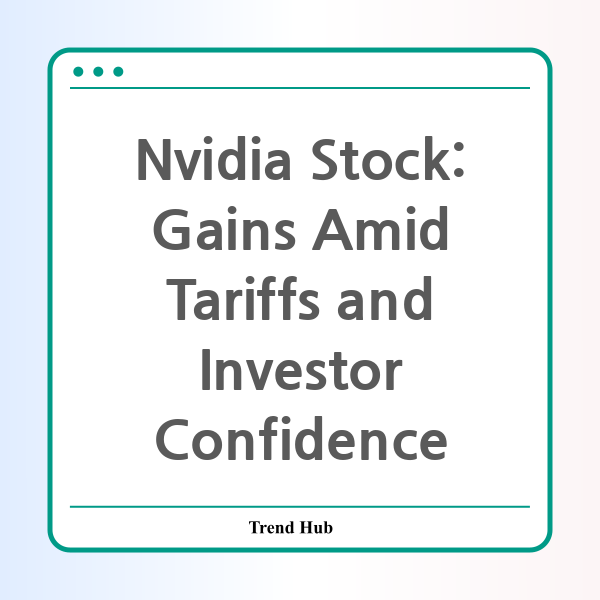* This website participates in the Amazon Affiliate Program and earns from qualifying purchases.

Have you been keeping an eye on Nvidia stock? With recent developments and investor moves, now is the time to assess your position in this key player of the tech industry.
Nvidia has made headlines recently, as its stock has gained traction amidst the backdrop of new tariffs coming into effect. Industry expert Cathie Wood has notably increased her stake in the company, signaling her confidence in Nvidia’s ability to navigate these turbulent waters. As the tariffs take hold, and while there are concerns regarding cost increases and supply chain disruptions, Nvidia continues to show resilience in its market position.
Analysts have raised eyebrows as Nvidia's stock finds itself below significant moving averages, including the 21-day exponential, as well as the 50-day and 200-day moving averages. The recent crossover of the 50-day moving average falling below the 200-day—commonly referred to as a “death cross”—further raises questions about future performance. For investors looking to explore bearish strategies, the bear call spread emerges as a compelling option for trading Nvidia stock.
The bear call spread strategy is a defined-risk approach, allowing traders to speculate on the potential stagnation or decline of Nvidia's stock price. By selling out-of-the-money calls at a higher strike price and buying further out-of-the-money calls, investors can generate income while limiting their risk. Current strategies suggest setting this spread at strike prices of 115 and 120, and with Nvidia trading around 98.40, the maximum gain potential is around $130, providing a 35% return if Nvidia closes below 115 by June 20.
It’s crucial to set parameters for these trades, particularly considering the market's unpredictability. If Nvidia trades above 110 or if the option spread value rises significantly, investors should be prepared to execute a stop-loss, protecting themselves from unforeseen shifts in the market.
Moreover, while Nvidia appears to be temporarily shielded from tariffs affecting semiconductors, the reality is more nuanced. Although the latest federal order has exempted some products, including processors, from new tariffs, it still leaves room for potential price increases across various components. Many of Nvidia's GPUs are subject to existing tariffs under previous orders, leading to concerns from analysts about future pricing dynamics. With a potential 32% duty looming over imports from key manufacturing hubs like Taiwan, Nvidia's overall supply chain could face significant challenges.
As the market continues to react to these tariffs, Nvidia's leadership is already considering ways to bolster manufacturing closer to home as part of a long-term strategy. Given the industry's reliance on global supply chains, the transition could take years and presents both risks and opportunities for investors.
In summary, Nvidia stock currently stands at a critical junction, balancing the influence of tariff policies, investor confidence, and overall market sentiment. Investors must remain vigilant, continuously monitoring the evolving landscape while exploring both bullish and bearish strategies to safeguard their portfolios.
As always, due diligence is essential. Every investment decision should be made in consultation with a qualified financial advisor, ensuring that your strategies align with your financial goals and risk tolerance.
* This website participates in the Amazon Affiliate Program and earns from qualifying purchases.